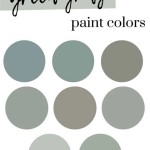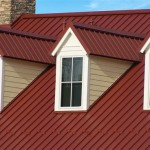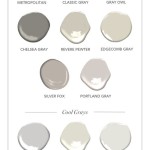Best Color to Paint a Wooden Fence: A Comprehensive Guide
Selecting the optimal color for a wooden fence is a decision that impacts both the aesthetic appeal and longevity of the structure. The color chosen influences how well the fence blends with or contrasts against the surrounding landscape, the house, and any other structures on the property. Furthermore, certain colors can offer better protection against the elements, thereby extending the lifespan of the wood.
This article provides a detailed examination of factors to consider when choosing the best color for a wooden fence. This includes examining common color choices, the influence of environmental factors, and how to prepare the fence for painting in order to achieve a long-lasting and visually pleasing result.
Understanding the Impact of Color Choice on Aesthetics and Functionality
The color of a wooden fence is more than just an aesthetic choice; it significantly affects how the fence interacts with its surroundings. A light-colored fence, such as white or light gray, can brighten up a shady yard and create the illusion of more space. These colors reflect sunlight, which can help keep the fence cooler in hot climates, potentially reducing expansion and contraction that can lead to cracks and warping. However, lighter colors also tend to show dirt, mildew, and other blemishes more readily, requiring more frequent cleaning and maintenance.
Conversely, darker colors, such as dark brown or black, can make a fence seem to recede into the background, making it a good choice for properties with lush landscaping. Darker colors absorb more heat, which can lead to higher surface temperatures and potentially accelerate the degradation of the wood, especially in areas with intense sun exposure. However, darker colors are also better at concealing dirt and stains, making them a practical choice for areas prone to mud or grime.
Neutral colors, such as beige or muted greens, offer a balanced approach. They blend well with natural surroundings and are less prone to showing dirt than brighter colors. They also don't absorb as much heat as darker shades, making them a versatile option for a variety of climates and landscaping styles.
Considering Environmental Factors and Climate
The local climate plays a crucial role in determining the best color for a wooden fence. In regions with high sun exposure, lighter colors are generally recommended. These colors reflect a significant portion of the sun's rays, preventing the wood from overheating. Overheating can cause the wood to dry out, crack, and warp over time. Choosing a lighter color can mitigate these effects and extend the lifespan of the fence.
In areas with high humidity or frequent rainfall, choosing a color that resists mold and mildew growth is important. Some paint formulations contain mildewcides, which are chemicals that inhibit the growth of these organisms. These paints are often available in a range of colors, allowing for both aesthetic preference and practical considerations to be met. Furthermore, ensuring proper drainage around the fence can also help prevent moisture buildup and reduce the risk of mold and mildew growth.
Coastal areas present unique challenges due to the presence of saltwater and high winds. Saltwater can corrode metal fasteners and accelerate the deterioration of wood. Choosing a paint color that is specifically formulated for marine environments can help protect the fence from the corrosive effects of saltwater. These paints typically contain additives that resist salt spray and UV damage.
Preparation is Key: Priming and Protecting the Wood
Regardless of the color chosen, proper preparation is crucial for ensuring a long-lasting and aesthetically pleasing paint job. This process begins with thoroughly cleaning the fence to remove any dirt, mildew, or loose paint. Pressure washing is an effective way to clean a wooden fence, but care must be taken not to damage the wood by using too high of a pressure setting. Mild detergents can also be used to remove stubborn stains or grime.
Once the fence is clean, it is important to inspect it for any damaged or rotting wood. Any damaged boards should be replaced before painting. Loose nails or screws should be tightened or replaced to ensure the structural integrity of the fence.
Priming the fence is an essential step that is often overlooked. Primer helps to seal the wood, creating a uniform surface for the paint to adhere to. This improves the paint's coverage, reduces the number of coats required, and helps to prevent the paint from peeling or cracking over time. Choose a primer that is specifically designed for exterior wood surfaces.
When applying paint, use high-quality brushes and rollers designed for exterior use. Apply the paint in thin, even coats, allowing each coat to dry thoroughly before applying the next. Pay attention to areas where the wood is exposed to the elements, such as the tops of the posts and the bottom of the fence, as these areas are more susceptible to water damage. Consider applying a sealant after painting to further protect the wood from moisture and UV damage.
Beyond paint application, periodic maintenance will extend the life of any fence. Inspecting the fence regularly for signs of damage or wear and tear, and addressing those issues promptly, is important. A simple cleaning with soap and water annually can remove buildup of dirt and mildew. Reapplication of sealant or a fresh coat of paint every few years will also provide longer-lasting protection.
The type of wood used for the fence also plays a role in the best color choice. Naturally rot-resistant woods like cedar or redwood already have inherent color tones and may require a stain instead of an opaque paint to highlight their natural beauty. Softer woods such as pine may benefit from the protective coating of paint and a more solid color to ensure longevity.
When making a color selection, it is wise to test the color on a small, inconspicuous area of the fence before committing to painting the entire structure. This allows for evaluation of how the color looks in different lighting conditions and how it interacts with the surrounding environment. Small samples of paint are often available from paint stores.
Ultimately, choosing the best color for a wooden fence involves a careful consideration of aesthetic preferences, environmental factors, and the type of wood used. By taking these factors into account and following proper preparation and painting techniques, it is possible to create a fence that is both beautiful and durable, enhancing the property for years to come.

Fence Paint Color Ideas To Boost Curb Appeal Wow 1 Day Painting

Fence Painting Ideas That Will Make The Difference

7 Best Paint Choices For A Wood Fence

Top 10 Wonderful Timber Fence Colors For 2025 Pentagon

Best Fence Colours For Small Garden The Paint Guide

Top 10 Wonderful Timber Fence Colors For 2025 Pentagon

Fence Painting Ideas That Will Make The Difference

Fence Paint Color Ideas To Boost Curb Appeal Wow 1 Day Painting

14 Best Backyard Fence Color Ideas For Stain Or Paint

Wooden Fence Stain Colors That Will Wow My Neighbors Olympic
Related Posts








